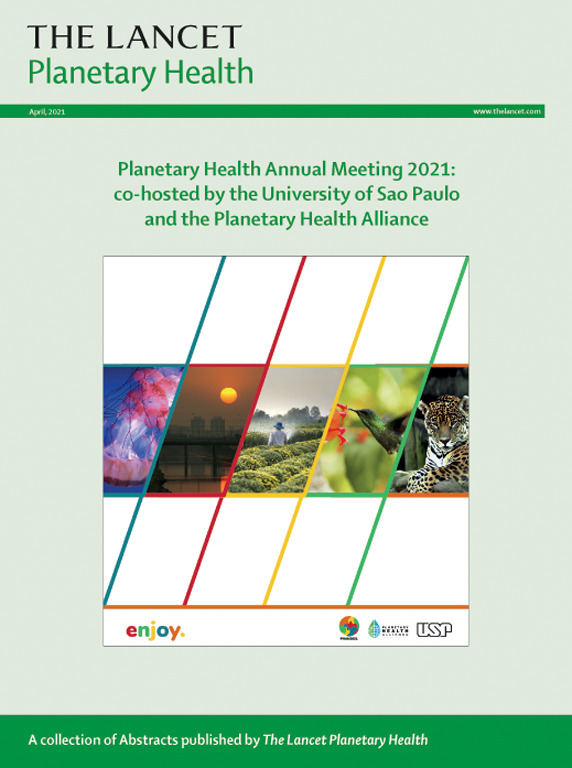The effect of air pollution exposure on menstrual cycle health using self-reported data from a mobile health app: a prospective, observational study
IF 21.6
1区 医学
Q1 ENVIRONMENTAL SCIENCES
引用次数: 0
Abstract
Background
Toxicological evidence suggests that ambient air pollution has endocrine-disrupting properties that can affect menstrual cycle functioning, which represents an important marker of women's reproductive health. We aimed to estimate the effect of short-term and long-term PM2·5 exposure on menstrual cycle outcomes across the USA, Brazil, and Mexico using self-reported data from a mobile health app.
Methods
For this prospective observational study, we collected de-identified self-reported data from the Clue mobile health app, in which users self-tracked menstruation cycles. For the current study, eligible participants were aged 18–44 years, were not using hormonal birth control, and lived in one of 230 cities in the USA, Mexico, or Brazil. The primary outcome of interest at the city level was the proportion of menstrual cycles with abnormally short length (<24 days) and long length (>38 days) of all cycles recorded. The primary outcome at the cycle level was a binary indicator: abnormal cycle length (<24 days or >38 days) or not (normal cycle length). We used regression analyses to evaluate associations between long-term PM2·5 concentrations (mean concentration between 2016 and 2020) and the city-level outcomes after controlling for potential confounders. Conditional logistic regression models were used to evaluate associations between cycle-specific PM2·5 and if a cycle was of abnormal length within an individual in the dataset, after controlling for time-varying factors.
Findings
Between Jan 1, 2016 and Dec 31, 2020, 92 550 app users residing in 230 cities across the USA, Brazil, and Mexico provided data corresponding to 2 220 281 menstrual cycles, and were included in our main cohort. A significant association was observed between long-term PM2·5 exposure and the proportion of menstrual cycles of abnormally long or short duration (odds ratio [OR] 1·023 [95% CI 1·013–1·033]) and the proportion of cycles that were specifically abnormally long (OR 1·036 [1·023–1·049]) for every 10 μg/m3 increase in PM2·5. No associations were identified between short-term PM2·5 concentrations and abnormal cycle length.
Interpretation
These findings suggest that PM2·5 exposure affects menstrual cycle outcomes. More research is needed to better elucidate the biological mechanisms through which PM2·5 affects the menstrual cycle.
Funding
None.
使用来自移动健康应用程序的自我报告数据研究暴露于空气污染对月经周期健康的影响:一项前瞻性观察研究
毒理学证据表明,环境空气污染具有内分泌干扰特性,可影响月经周期功能,而月经周期功能是女性生殖健康的重要标志。我们的目的是利用来自移动健康应用程序的自我报告数据,估计短期和长期PM2·5暴露对美国、巴西和墨西哥月经周期结果的影响。方法在这项前瞻性观察研究中,我们从Clue移动健康应用程序收集了去识别的自我报告数据,用户在该应用程序中自我跟踪月经周期。在目前的研究中,符合条件的参与者年龄在18-44岁之间,未使用激素避孕措施,居住在美国、墨西哥或巴西的230个城市之一。城市一级的主要结局是记录的所有月经周期中异常短(24天)和长(38天)月经周期的比例。周期水平的主要结局是一个二元指标:异常周期长度(24天或38天)或正常周期长度(正常周期长度)。在控制潜在混杂因素后,我们使用回归分析来评估长期PM2·5浓度(2016年至2020年的平均浓度)与城市水平结果之间的关系。在控制时变因素后,使用条件逻辑回归模型来评估周期特异性PM2·5与数据集中个体中某个周期是否具有异常长度之间的关联。在2016年1月1日至2020年12月31日期间,居住在美国、巴西和墨西哥230个城市的92,550名应用程序用户提供了与2,220 281个月经周期相对应的数据,并被纳入我们的主要队列。PM2·5浓度每增加10 μg/m3,长期暴露与月经周期异常长或异常短的比例(比值比[or] 1.023 [95% CI: 1.013 - 1.033])和月经周期异常长比例(or: 1.036[1.023 - 1.049])之间存在显著关联。短期PM2·5浓度与异常循环长度之间未发现关联。这些研究结果表明,PM2·5暴露会影响月经周期结果。需要更多的研究来更好地阐明PM2·5影响月经周期的生物学机制。
本文章由计算机程序翻译,如有差异,请以英文原文为准。
求助全文
约1分钟内获得全文
求助全文
来源期刊

Lancet Planetary Health
Multiple-
CiteScore
28.40
自引率
2.30%
发文量
272
审稿时长
8 weeks
期刊介绍:
The Lancet Planetary Health is a gold Open Access journal dedicated to investigating and addressing the multifaceted determinants of healthy human civilizations and their impact on natural systems. Positioned as a key player in sustainable development, the journal covers a broad, interdisciplinary scope, encompassing areas such as poverty, nutrition, gender equity, water and sanitation, energy, economic growth, industrialization, inequality, urbanization, human consumption and production, climate change, ocean health, land use, peace, and justice.
With a commitment to publishing high-quality research, comment, and correspondence, it aims to be the leading journal for sustainable development in the face of unprecedented dangers and threats.
 求助内容:
求助内容: 应助结果提醒方式:
应助结果提醒方式:


